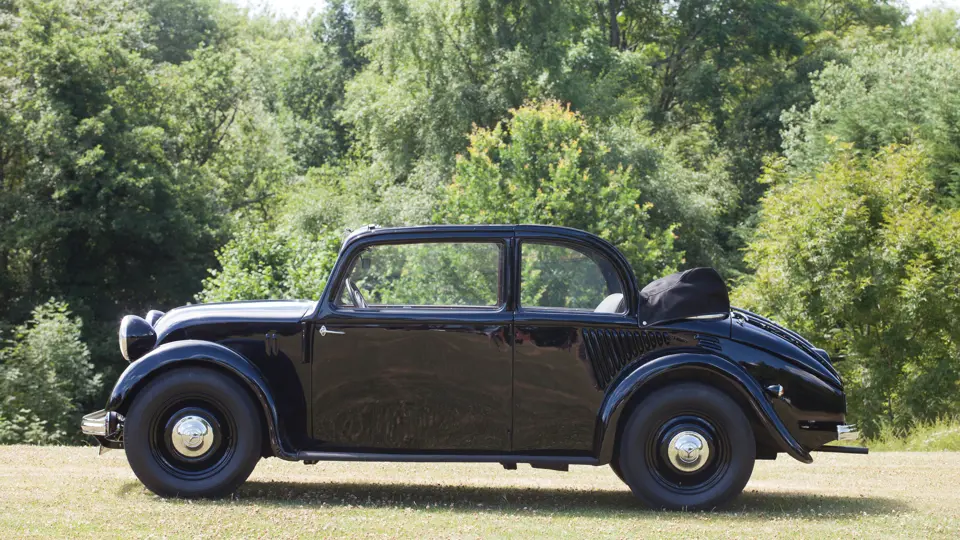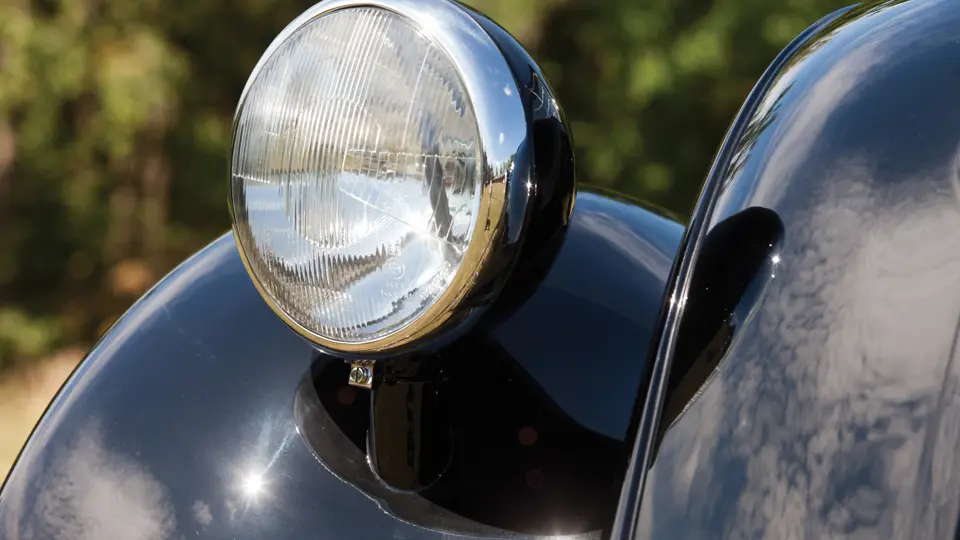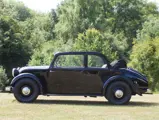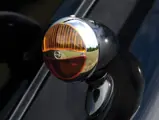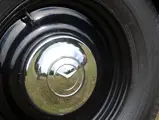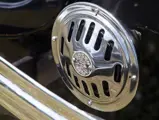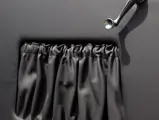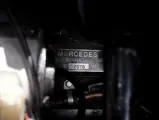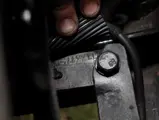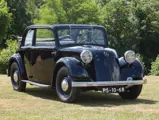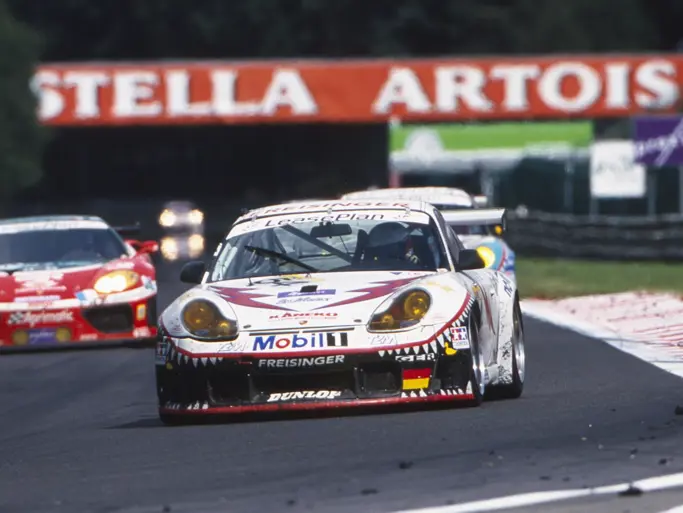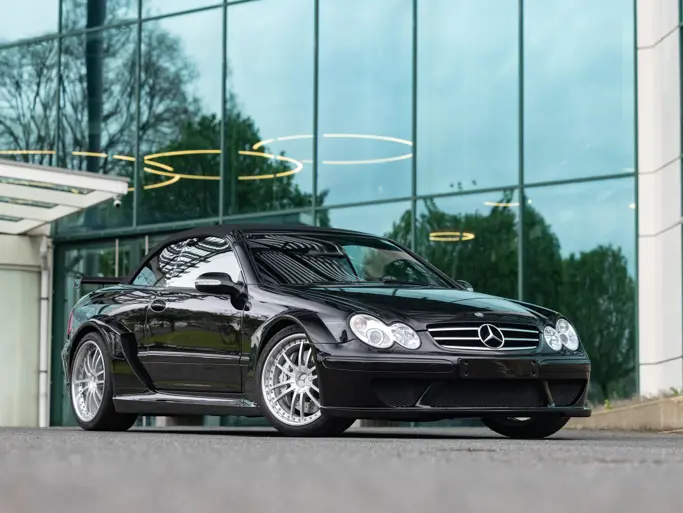25 bhp, 1,308 cc flathead inline four-cylinder engine, four-speed manual transmission, transverse leaf-spring front suspension, coil-spring rear suspension, and four-wheel drum brakes. Wheelbase: 2,500 mm
Talented Daimler-Benz engineer Hans Nibel was one of the first automotive minds to begin experimenting with rear-engine chassis in the late 1920s. Within five years, in February 1934, a production version of one of his designs, the 130 H, had debuted at the Berlin Auto Show. Powered by a water-cooled, flathead, four-cylinder engine on a rather conventional chassis, its streamlined bodywork could be considered something of the German Chrysler Airflow. It was advanced, ahead of its time, and not really what most of the German public saw themselves buying. In addition, many of the buyers were not prepared for how to drive a rear-engine car.
The 130 H was not a bad car; it was just too far ahead of its time. Variations of the design would remain in production until after World War II, but it would never achieve the same fame as the Volkswagen Beetle, which, arguably, borrowed many of its original ideas.
The Cabriolet Saloon shown here was delivered through the Daimler-Benz Hamburg branch in August 1935 and features, as its name suggests, a folding fabric roof, which opens to allow fresh air and sunlight to spill into the interior. Finished in black with charcoal upholstery and carpets, it presents as a very tidy older restoration, with presentable paint and an extremely well-kept interior. It is even particularly well detailed under the rear bonnet and underneath, with obvious, recent, and extensive attention paid to freshen the suspension, cylinder head, and block. Bosch headlamps lead the way, with matching trafficators signalling turns in busy cities.
As one of Mercedes-Benz’s most innovative models of the period, this 130 H is a rarely seen landmark in the company’s engineering timeline, and it deserves the closest attention.
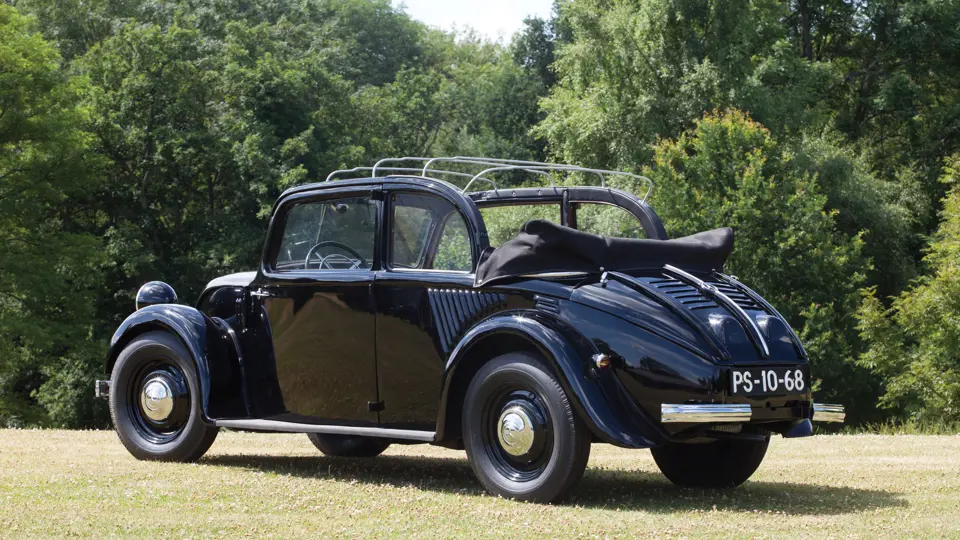



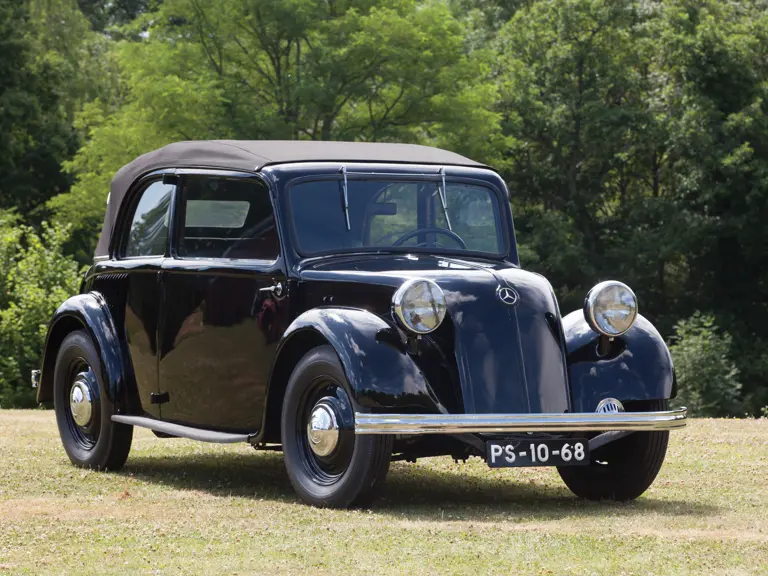
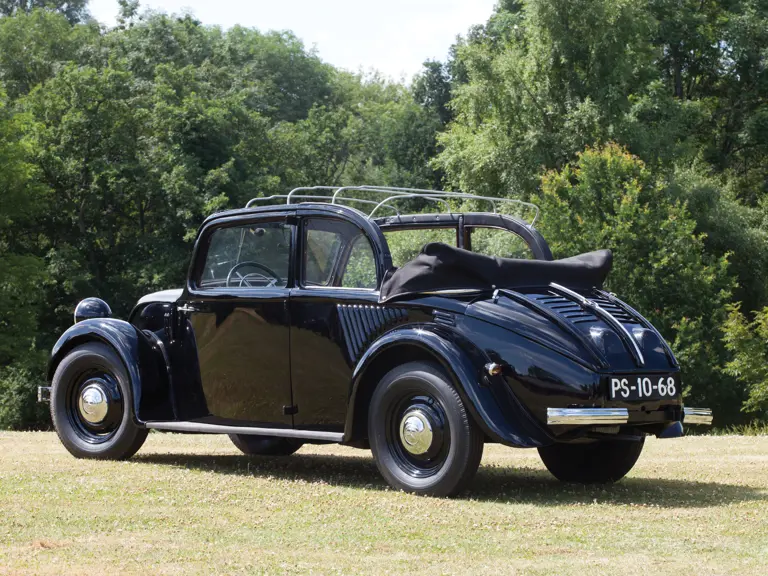

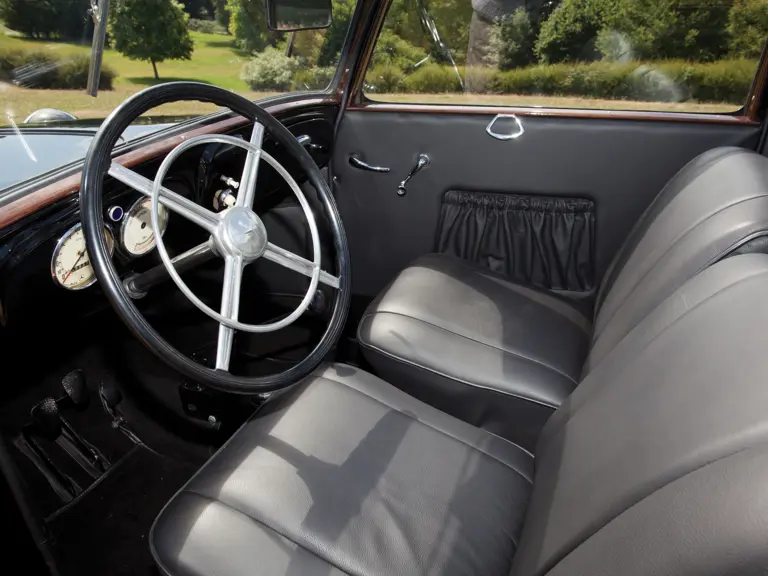

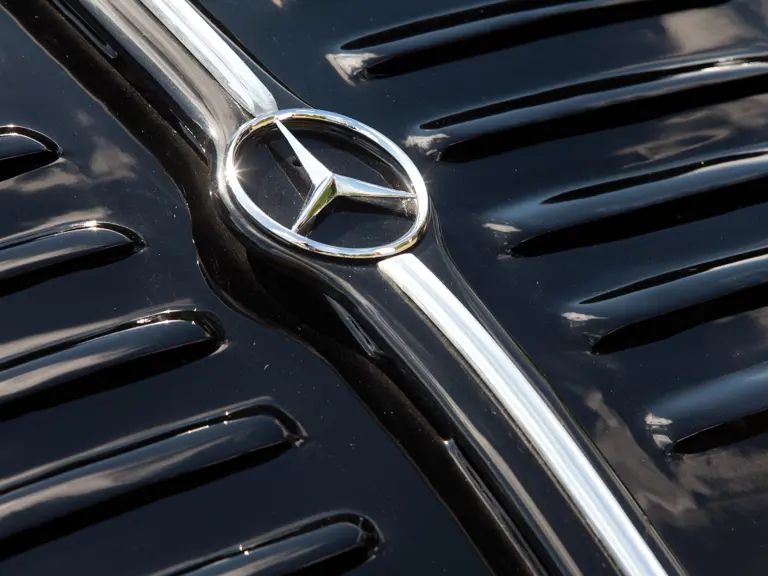


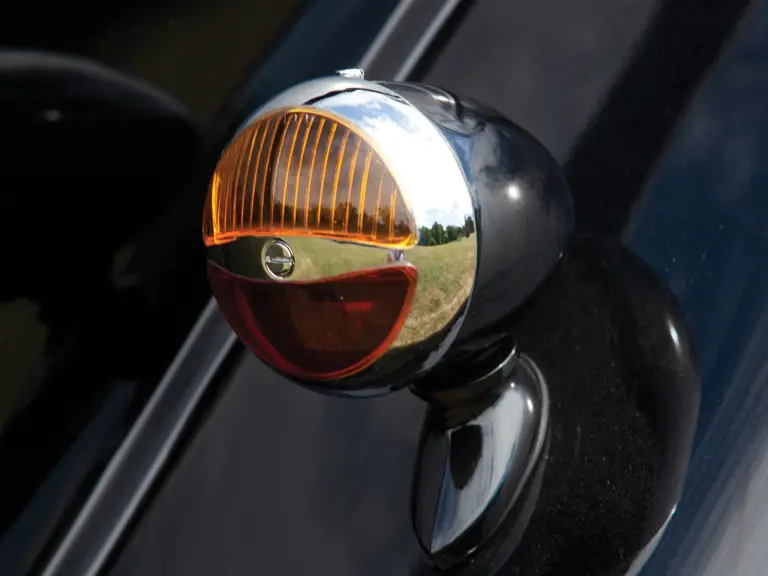
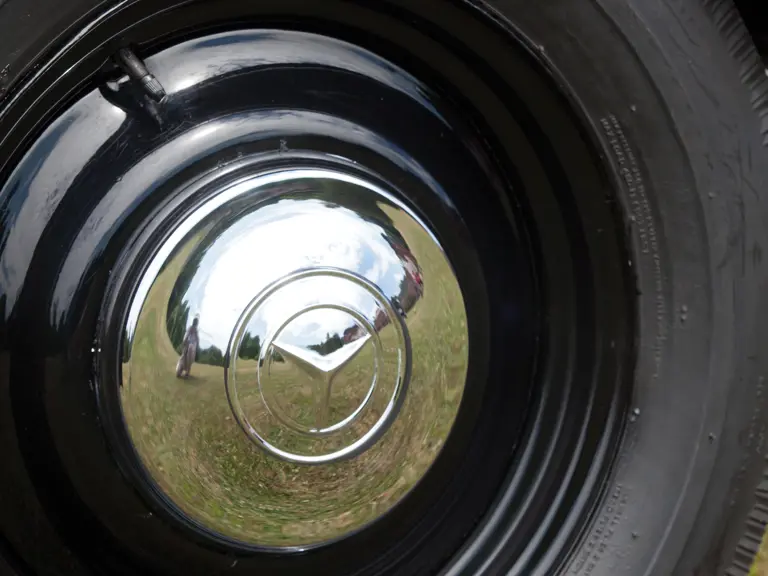
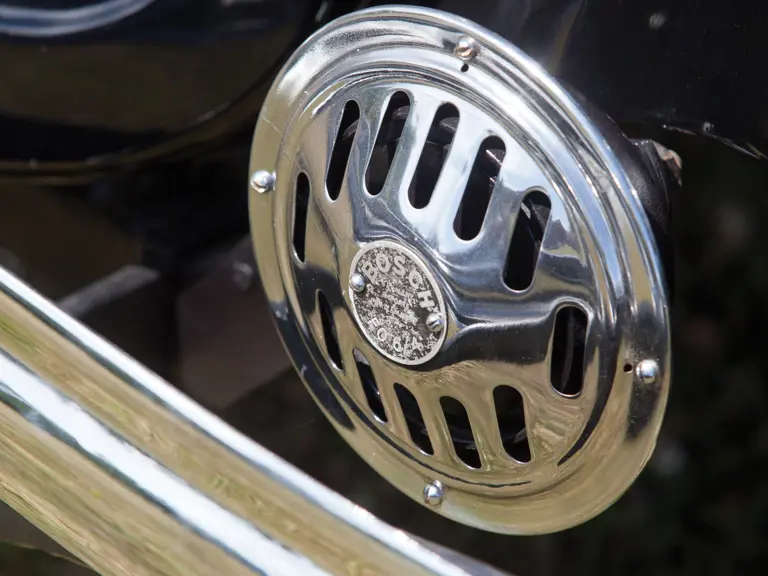
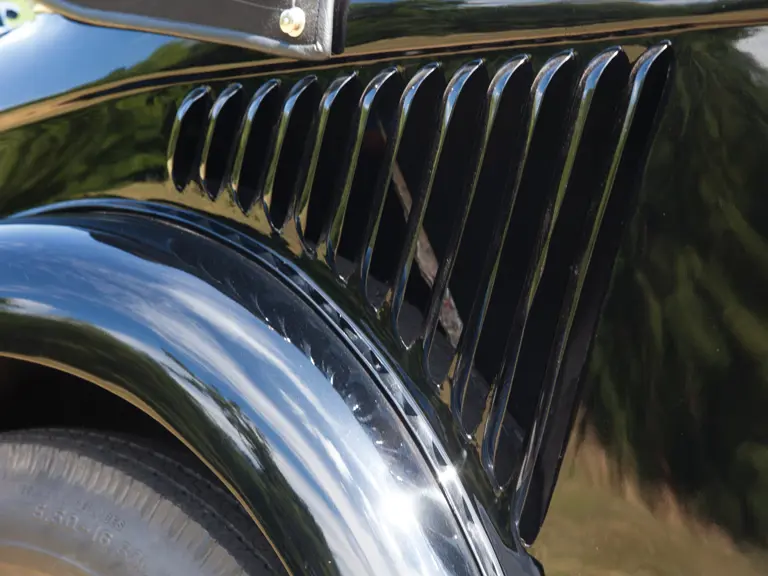
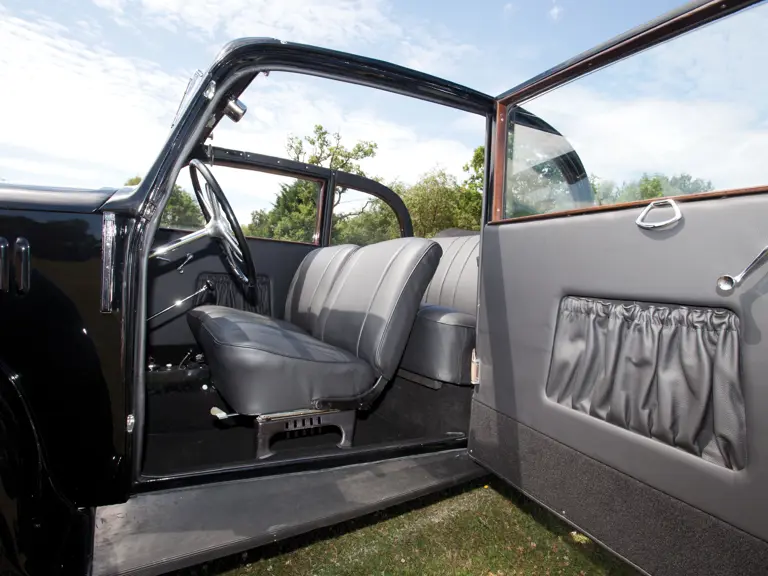
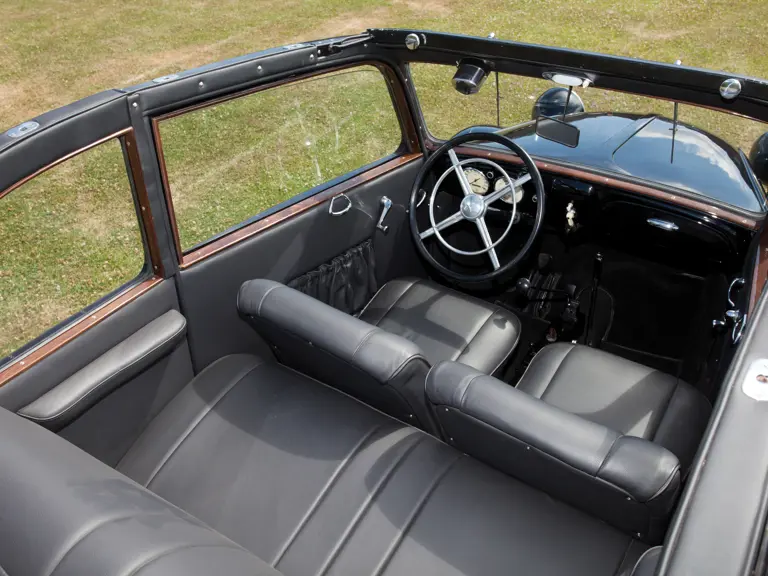
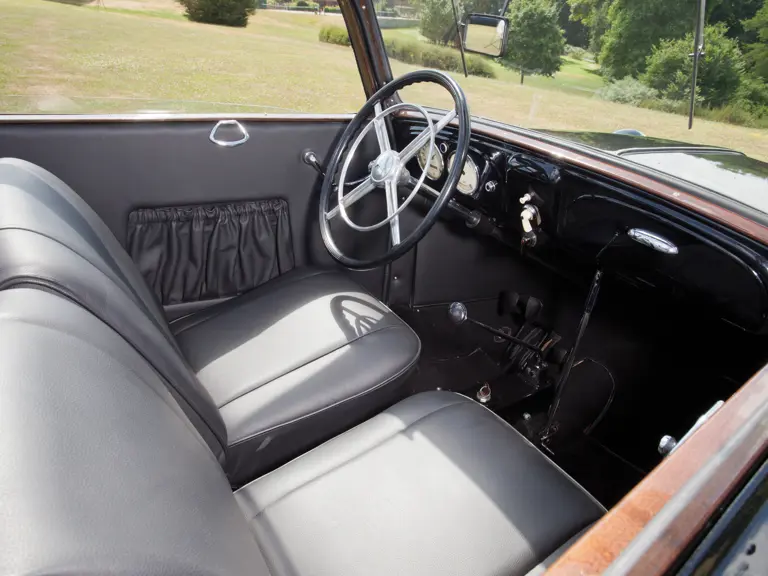
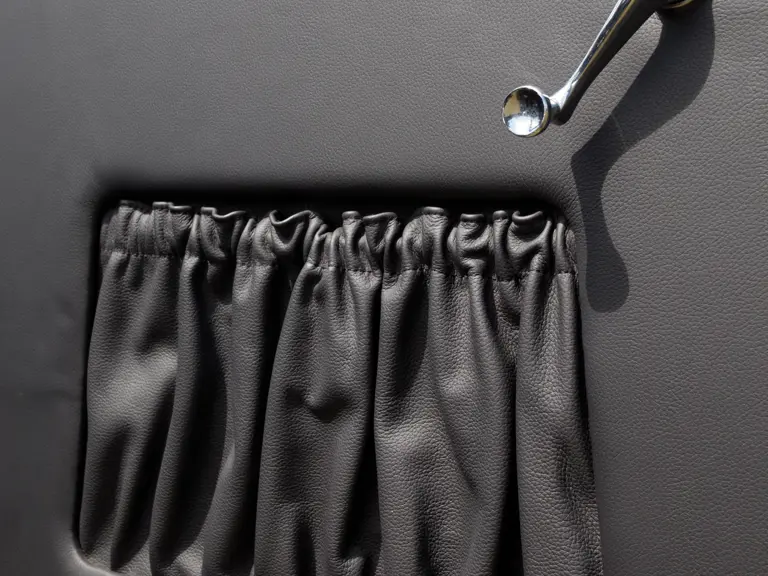
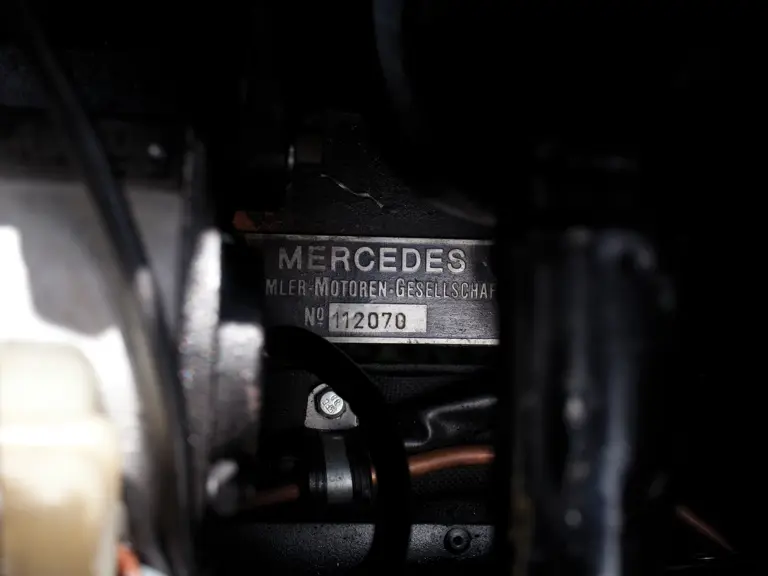
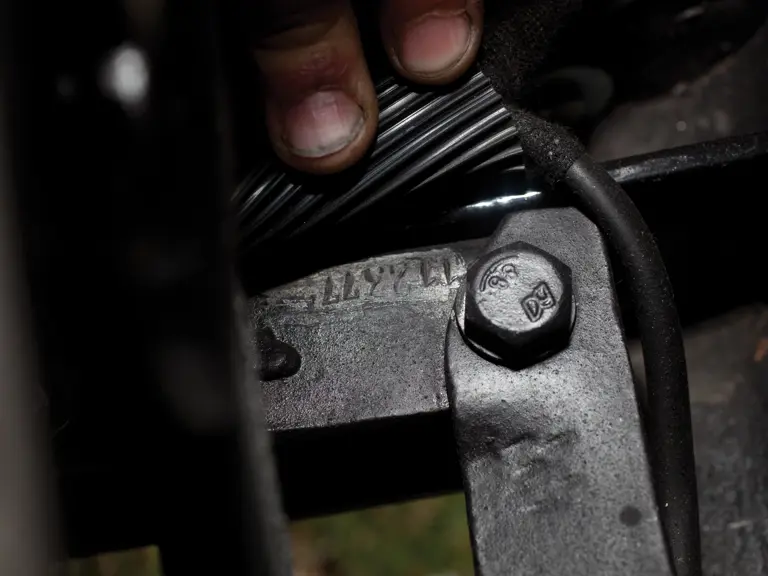
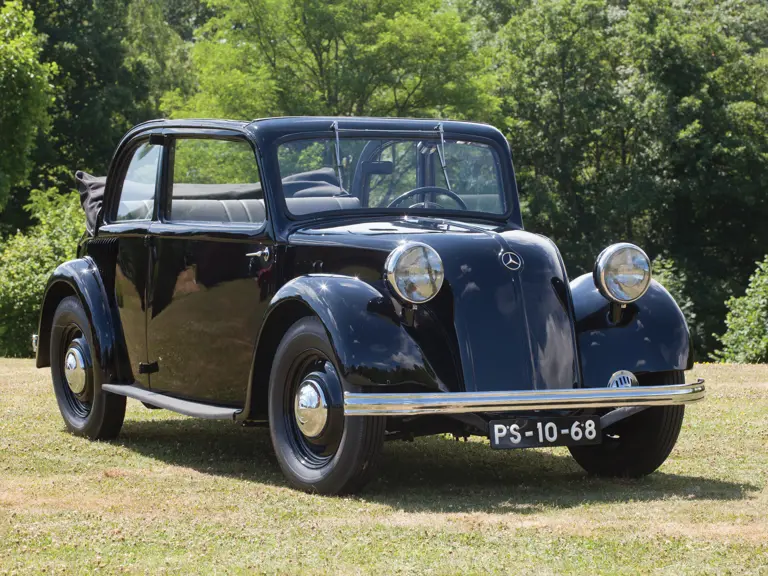
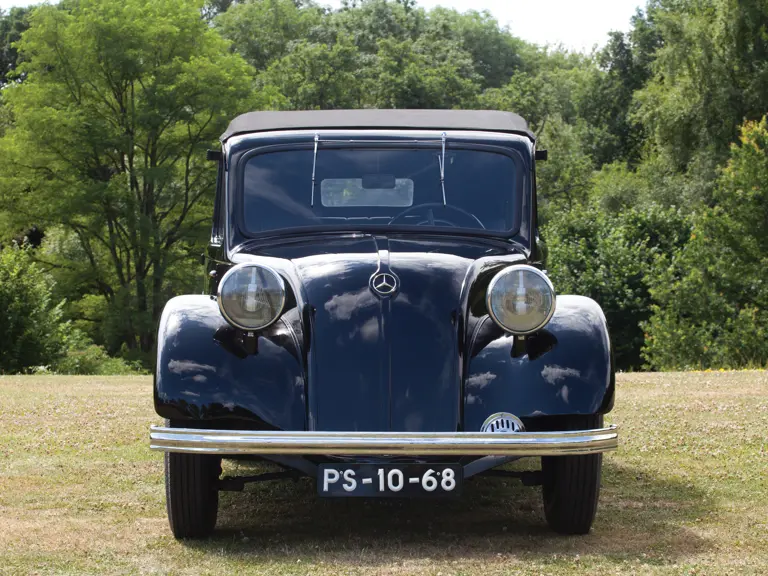
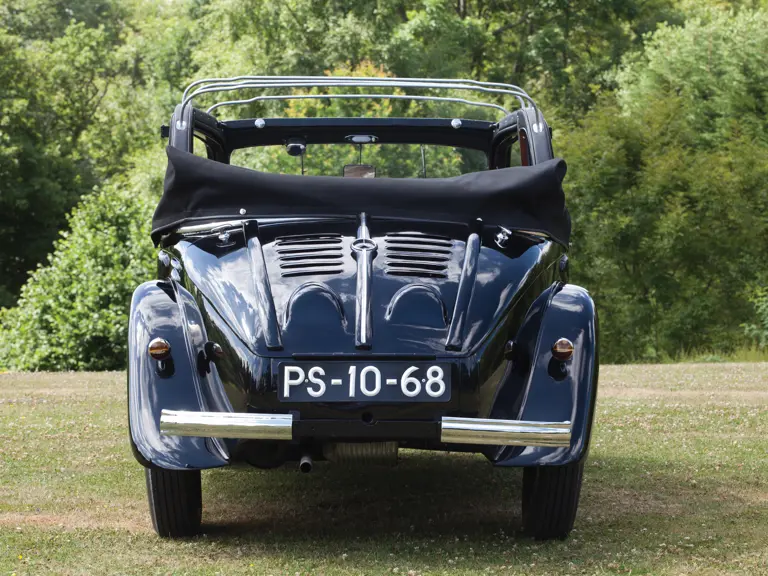
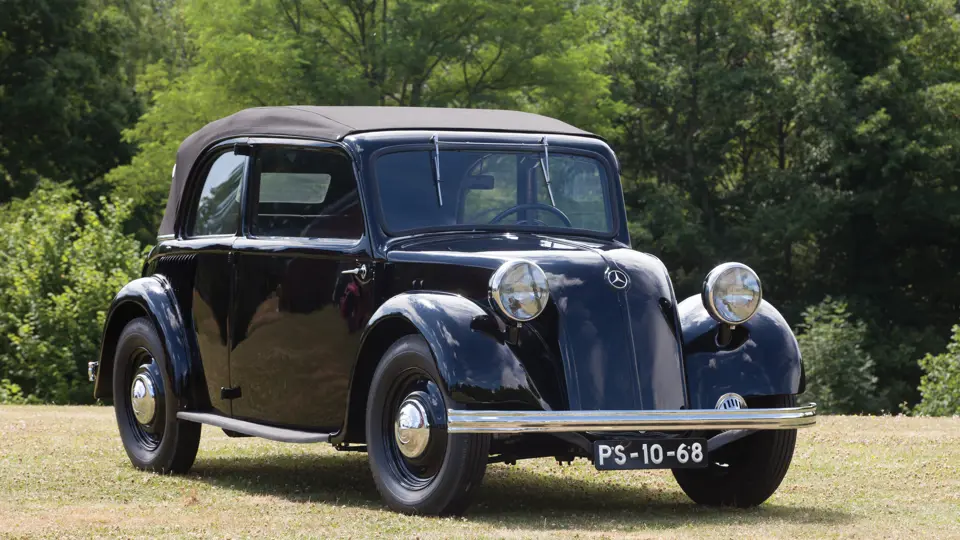
 | London, United Kingdom
| London, United Kingdom
